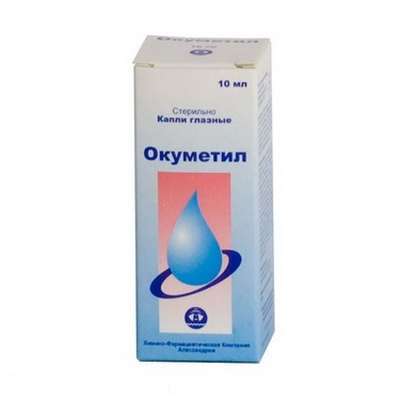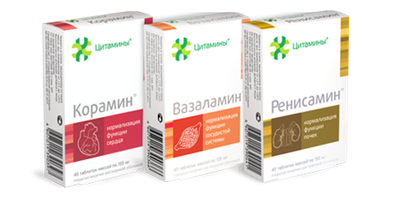Instruction for use: Rusam
I want this, give me price
Dosage form: Solution for subcutaneous administration
ATX
L03AX Other immunostimulants
Pharmacological group:
Antiallergic agent [Other immunomodulators]
The nosological classification (ICD-10)
J06 Acute upper respiratory tract infections of multiple and unspecified locations: Frequent colds of viral diseases; Infections of ENT organs; Acute respiratory illness of influenza nature; Pain for colds; Acute catarrhal disease; Cold; Colds; Colds; Respiratory infection; Seasonal catarrhal disease; Seasonal colds; Pain in infectious and inflammatory diseases of the upper respiratory tract; Bacterial infections of the upper respiratory tract; Bacterial infections of the respiratory system; Viral respiratory disease; Viral respiratory tract infections; Inflammatory disease of the upper respiratory tract; Inflammatory diseases of the upper respiratory tract; Inflammatory diseases of the upper respiratory tract with difficult to separate sputum; Inflammatory respiratory disease; Secondary infections for colds; Difficult sputum separation in acute and chronic respiratory diseases; Upper respiratory tract infections; Infections of the upper respiratory tract; Respiratory tract infections; Respiratory and lung infections; Infectious-inflammatory diseases of the upper respiratory tract; Infectious-inflammatory diseases of the upper respiratory tract and ENT organs; Infectious-inflammatory diseases of the upper respiratory tract in adults and children; Infectious-inflammatory diseases of the upper respiratory tract; Infectious inflammation of the respiratory tract; Respiratory tract infection; Qatar upper respiratory tract; Catarrh of the upper respiratory tract; Catarrh of the upper respiratory tract; Catarrhal phenomena from the upper respiratory tract; Cough in diseases of the upper respiratory tract; Cough for colds; ARVI; ARI; ARI with phenomena of rhinitis; Acute respiratory infection; Acute infectious-inflammatory disease of the upper respiratory tract; Acute respiratory disease; Persecution in the throat or nose; Respiratory and viral infections; Respiratory diseases; Respiratory infections; Recurrent respiratory tract infections; Secondary infections with influenza; Influenza states; Feverish conditions for influenza
J22 Acute respiratory infection of lower respiratory tract, unspecified: Bacterial respiratory disease; Bacterial infections of the lower respiratory tract; Bacterial infections of the respiratory system; Viral respiratory disease; Viral respiratory tract infections; Inflammatory respiratory disease;; Difficult sputum separation in acute and chronic respiratory diseases; Respiratory tract infections; Respiratory and lung infections; Lower respiratory tract infections; Infections of the lower respiratory tract; Infectious inflammation of the respiratory tract; Infectious diseases of the respiratory tract; Infectious diseases of the lungs; Infectious diseases of the respiratory system; Respiratory tract infection; Cough for colds; Pulmonary infection; Acute respiratory tract infection; Acute respiratory viral infection; Acute inflammatory airway disease; Acute respiratory disease; Respiratory infection; Respiratory and viral infections; Respiratory syncytial viral infection in young children; Respiratory diseases; Respiratory infections
J30 Vasomotor and allergic rhinitis: Allergic rhinopathy; Allergic rhinosinusopathy; Allergic diseases of the upper respiratory tract; Allergic rhinitis; Allergic rhinitis seasonal; Vasomotor runny nose; Prolonged allergic rhinitis; All-year-round allergic rhinitis; All-year allergic rhinitis; Year-round or seasonal allergic rhinitis; All-the-year-round rhinitis of an allergic nature; Rhinitis vasomotor allergic; Exacerbation of pollinosis in the form of rhinoconjunctival syndrome; Acute allergic rhinitis; Edema of the nasal mucosa; Edema of the nasal mucosa; Edema of the mucous membrane of the nasal cavity; Swelling of the nasal mucosa; Swelling of the nasal mucosa; Pollinosis; Permanent allergic rhinitis; Rhinoconjunctivitis; Rhinosinusitis; Rhinosinusopathy; Seasonal allergic rhinitis; Seasonal allergic rhinitis; Hay rhinitis; Chronic allergic rhinitis; Allergic diseases of the respiratory tract
J31.0 Chronic rhinitis: Rhinitis hyperplastic chronic; Polyposis rhinosinusitis; Atrophic rhinitis with crust formation; Hypertrophic rhinitis; Coryza is fetid; Rhinitis hyperplastic; Rhinitis chronic; Rhinitis chronic atrophic offensive; Rhinitis chronic atrophic simple; Rhinitis chronic hypertrophic; Exacerbation of chronic rhinitis; Chronic atrophic rhinitis; Dry rhinitis
J45 Asthma: Asthma of physical effort; Asthmatic conditions; Bronchial asthma; Bronchial asthma of light course; Bronchial asthma with difficulty in sputum discharge; Bronchial asthma of severe course; Bronchial asthma physical effort; Hypersecretory asthma; The hormone-dependent form of bronchial asthma; Curbing asthma attacks with bronchial asthma; Non-allergic bronchial asthma; Night Asthma; Exacerbation of bronchial asthma; Attack of bronchial asthma; Endogenous forms of asthma; Night attacks of asthma; Cough with bronchial asthma
L20 Atopic dermatitis: Allergic diseases of the skin; Allergic skin disease noninfectious etiology; Allergic skin disease etiology nemikrobnoy; Allergic skin diseases; Allergic skin lesions; Allergic reactions on the skin; atopic dermatitis; Allergic dermatosis; Allergic diathesis; Allergic itching dermatosis; Allergic skin disease; Allergic skin irritation; allergic Dermatitis; atopic Dermatitis; allergic dermatoses; exudative diathesis; Itchy atopic eczema Itchy allergic dermatosis; Allergic skin disease; Cutaneous allergic reaction to drugs and chemicals; Cutaneous reactions to medications; Skin and allergic disease; Acute eczema; common neurodermatitis; Chronic atopic dermatitis; Exudative diathesis
L23 Allergic contact dermatitis: Allergic dermatitis;Purulent allergic dermatopathies; Contact allergic reaction; Contact allergic dermatitis; Contact allergic dermatitis; Photoallergic contact dermatitis
L50 Urticaria: Idiopathic chronic urticarial; Injury Urticaria; Chronic urticarial; Hives of the newborn
T78.3 Angioedema: Edema Quincke; Laryngeal exacerbation with angioneurotic edema; Recurrent angioedema; Allergic edema; Recurrent swelling of Quincy
Composition
Solution for subcutaneous injection 1 amp.
active substance: Extract from the culture of the thermophilic strain of Staphylococcus aureus (Staphylococcus aureus, strain C-2)
Auxiliary substances: sodium chloride solution for injection 0.9%; Phenol 0.025-0.05%
Description of dosage form
Solution: transparent colorless or slightly colored liquid with a slight smell of phenol.
Pharmachologic effect
Mode action - anti-inflammatory, anti-allergic.
Pharmacodynamics
Has anti-inflammatory and anti-allergic effect. Reduces edema of the mucous membranes and skin, reduces the content of eosinophils and degranulated mast cells in the inflammation focus and increases the concentration of secretory Ig class A in the mucous membranes, thereby increasing their resistance to infection. Reduces the content of markers of allergic inflammation: a general Ig class E in the blood and nitric oxide in the exhaled air.
Indications for the preparation Rusam
Seasonal (pollinosis) and all-the-year-round allergic rhinitis;
bronchial asthma;
hives;
Angioedema;
Atopic and other allergic dermatitis;
Frequent respiratory infections.
Contraindications
Hypersensitivity to the drug;
Acute infection;
Tuberculosis in active form;
Decompensated diseases of internal organs;
pregnancy;
The period of breastfeeding;
Children's age till 4 years.
With caution: the presence of foci of chronic infection (chronic tonsillitis, sinusitis) because of the possibility of their exacerbation.
Side effects
Increase in body temperature to subfebrile digits, weakness, exacerbation of chronic infection, short-term coughing with chronic bronchitis, increased skin rash with skin allergy. These symptoms are usually mild and transitory, do not require withdrawal of the drug.
Interaction
The interaction of the drug RuzamŪ with other drugs is not registered. RuzamŪ can be prescribed together with antihistamines, GCS or antibiotics.
Dosing and Administration
SC.
Children from 4 to 6 years - 0.1 ml once a week; Adults and children over 6 years - 0.2 ml once a week, the course - 5-10 weeks. Within a year, one to four courses can be conducted. With pollinosis, the drug is administered 6-8 weeks before the flowering period of the allergenic plant; With frequent respiratory infections, prevention should be carried out in the spring and autumn.
Overdose
Cases of overdose are not registered.
Special instruction
The solution remaining in the ampoule should not be used.
Influence on the ability to drive vehicles and work with machinery. The drug does not affect the performance of potentially hazardous activities requiring special attention and quick reactions (including driving).
Release form
Solution for subcutaneous administration. In ampoules of colorless or light-shielded glass, 0.2 or 0.5 ml. 5 amp. In a planar cell package. 1 or 2 contour packs with a knife or scarifier ampoule (or without them) in a pack of cardboard.
Manufacturer
OOO "RUZAM-M". Russia, Moscow
Conditions of supply of pharmacies
On prescription.
Storage conditions of the drug Rusam
In the dark place at a temperature of 4-20 ° C.
Keep out of the reach of children.
Shelf life of the drug Rusam
4 years.
Do not use after the expiry date printed on the package.

 Cart
Cart





